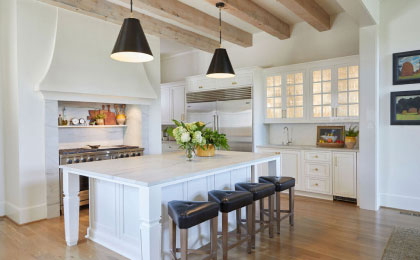Where the art comes into the equation is when creating the design elements of your kitchen. Whether it’s transitional, traditional, French Country, industrial, or contemporary, every kitchen design style has specific features that work together to define the style.
“ Experience luxury and comfort with our airport transfer limo service. Our professional and courteous drivers will meet you at the airport and transport you to your destination in one of our high-end limousines. Sit back, relax and let us handle the traffic while you start your trip in style. Book now for a hassle-free and memorable airport transfer experience.”
The transitional kitchen design style has been one of the most popular, if not THE most popular, design choice of homeowners and designers for several years. It’s pretty easy to see why! The perfect blend of traditional and contemporary design elements, transitional kitchens are as versatile as they are stylish. So what exactly is a transitional kitchen, and why is it so popular? Because they offer a balance between traditional and contemporary elements, the transitional style can blend into an older home’s architecture while providing functionality for the modern lifestyle.
The Rustic Beauty of French Country Design
One design style living up to its name, more than almost any other, is French Country! Whether you’re in upstate New York, or Hollywood, California, when you walk into a classically designed French Country kitchen, you’re immediately transported deep into the heart of Provence. This style, when done well, feels effortless. However, the fact is, French Country design follows a specific formula to achieve its “imperfectly perfect” aesthetic.


At its core, French Country design exhibits a refined elegance with its neutral color palette and traditional details. Properly executed, a French Country design strikes a balance between rustic charm and sophisticated luxury. It’s a balance between beauty and comfort that feels lived in yet still welcoming. You can also integrate playful touches along with rustic charm, for example, botanical elements in art, fabric, and wall coverings.






